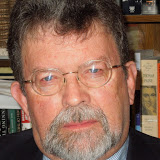For example, one SCLC founder, Edward Edmonds, "revitalized an NAACP youth group in Greensboro, North Carolina, by leading protests to demand integration of public schools and swimming pools during the summer of 1959." Members of that group conducted a "sit-in" at a lunch counter in Greensboro on February 1, 1960. (p.118) The youth movement spread to more than 100 other southern cities by April and became the basis for the organization known as the Student Nonviolent Coordinating Committee (SNCC).
In the midst of the Montgomery bus boycott, A. Philip Randolph "sought to solidify support for the nonviolent movement among civil rights and labor activists in the North." In February 1956, he announced the formation of "In Friendship," and in May he "announced that George Meany, Walter Reuther, and other labor leaders had pledged $2 million to a "war chest' aimed at supporting the boycott in Montgomery, the NAACP's legal team, and the black sharecroppers who faced eviction for their attempts to vote in the South." (p.109)
Although Randolph held a leadership position in the American Federation of Labor, his relationship with the newly merged AFL-CIO began to deteriorate as soon as he pressed for the end of employment discrimination within these parent organizations. On September 23, 1959, at the AFL-CIO convention in San Francisco, "Randolph introduced two resolutions, one calling for the expulsion of any unions that did not drop bans on nonwhite members within six months and the other ordering the "liquidation and elimination' of any segregated locals in unions affiliated with the AFL-CIO." (p. 130)
When these resolutions were rejected, Randolph undertook the task of building a national organization of black trade unionists. Thus, he gathered some 1,500 men and women to attend the founding convention of the Negro American Labor Council (NALC) on May 28, 1960. (p. 132)
Like the SCLC, NALC "was a network of leaders rather than a mass organization like the NAACP or a union"but it was composed of staff and elected officials from local unions and civil rights groups who wielded tremendous influence in their communities." (pp. 142-43) "By 1962 NALC chapters were operating in twenty-three cities." (p. 152) Nevertheless, NALC made no progress in securing the elimination of Jim Crow unions within the AFL-CIO.
According to Professor Jones, frustrations within NALC prompted Randolph to call for a march on Washington. He asked his friend, Bayard Rustin, to "prepare a proposal that could win support from civil rights and labor leaders for a "mass descent' on the nation's capital." The objective of the march would be to draw attention to "the economic subordination of the Negro," to create "more jobs for all Americans," and to push for a "broad and fundamental program for economic justice." (p.161)
(However, "frustrations within NALC" does not satisfactorily explain the impetus for a march on Washington. Other factors contributed, including "the events in Birmingham, Ala., in early May -- the police beatings, the snapping dogs, the fire hoses turned on people -- that galvanized the movement." [David Brooks, "The Ideas Behind the March," New York Times, Aug. 27, 2013])
Concerned that Randolph's focus on jobs might come at the expense of King's civil rights movement in the South, Anna Arnold Hedgeman, a leader in the black women's movement, arranged a meeting between the two, which resulted in an agreement to march under the slogan, "For Jobs and Freedom." They soon gained the support of John Lewis, chairman of SNCC, and James Farmer of CORE (Congress of Racial Equality).
(Both the AFL-CIO and Malcolm X refused to participate.)
Although newspaper reporters expressed concern about possible violence and six thousand police, firefighters and soldiers were assigned crowd control duties, militant non-violence ruled the day on August 28, 1963. (p. 176)
A. Philip Randolph, Floyd McKissick (reading a letter from James Farmer), John Lewis, Whitney Young and Roy Wilkins were among the "militants" who issued specific complaints and made demands upon their fellow Americans and the U.S. Government.
Roy Wilkins, for example, "leveled a scathing attack at the White House, asking how it was possible that that the United States government could not protect civil rights activists from being "beaten and kicked and maltreated and shot and killed by local and state enforcement officers." (pp.195-96)
The last speech of the day was by Dr. Martin Luther King, Jr. According to Professor Jones, King's powerful "I Have a Dream" speech "was the least representative or attentive to the specific goals and demands of the mobilization." (p. 196) Yet, fifty years later, it is Dr. King's beautiful vision that is remembered, not the many specific goals and demands articulated by the militants.
Nevertheless, the March on Washington was an "unmitigated success." (p. 201) It influenced President Lyndon B. Johnson's decision to announce a War on Poverty and its pressure helped to enact the Civil Rights Act of 1964.
Moreover, as Professor Jones noted in an OP-ED in the New York Times, "The message of the march still resonated in 1965, when Congress passed the Voting Rights Act, Medicare and Medicaid, key features of " Johnson's proposal to bring "an end to poverty and racial injustice.'" [NYT, Aug. 28, 2013]
Paradoxically, the attention paid by Professor Jones to A. Philip Randolph and his efforts to obtain jobs for African-Americans caused him to overlook the significantly negative impact that civil rights protests had on prospective jobs for southern whites. To cite just one example, the bloody campus riot at the University of Mississippi on the eve of James Meredith's registration (in the fall of 1962) prompted an executive of Work Wear of Cleveland, Ohio, to tell a developer in Mississippi that "his firm would not "consider expanding in Mississippi again until the state and people join the Union again.'" [James C. Cobb, The South and America Since World War II, p. 103]
(Note: You can view every article as one long page if you sign up as an Advocate Member, or higher).





